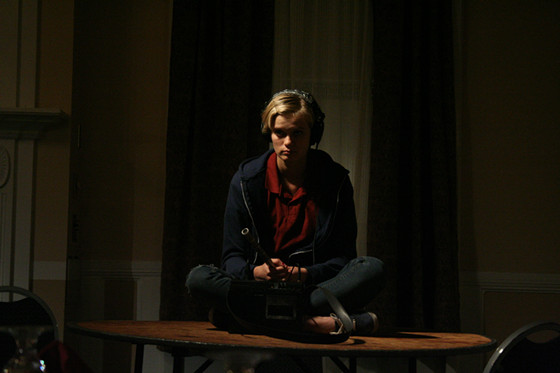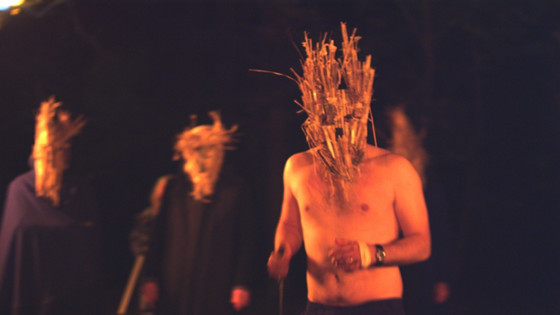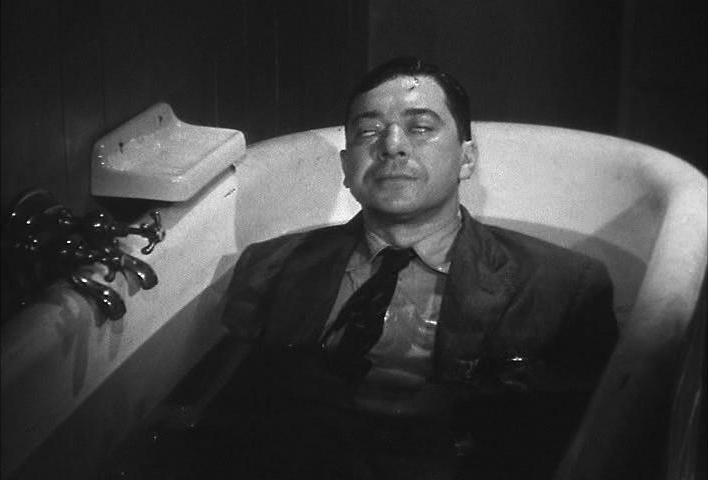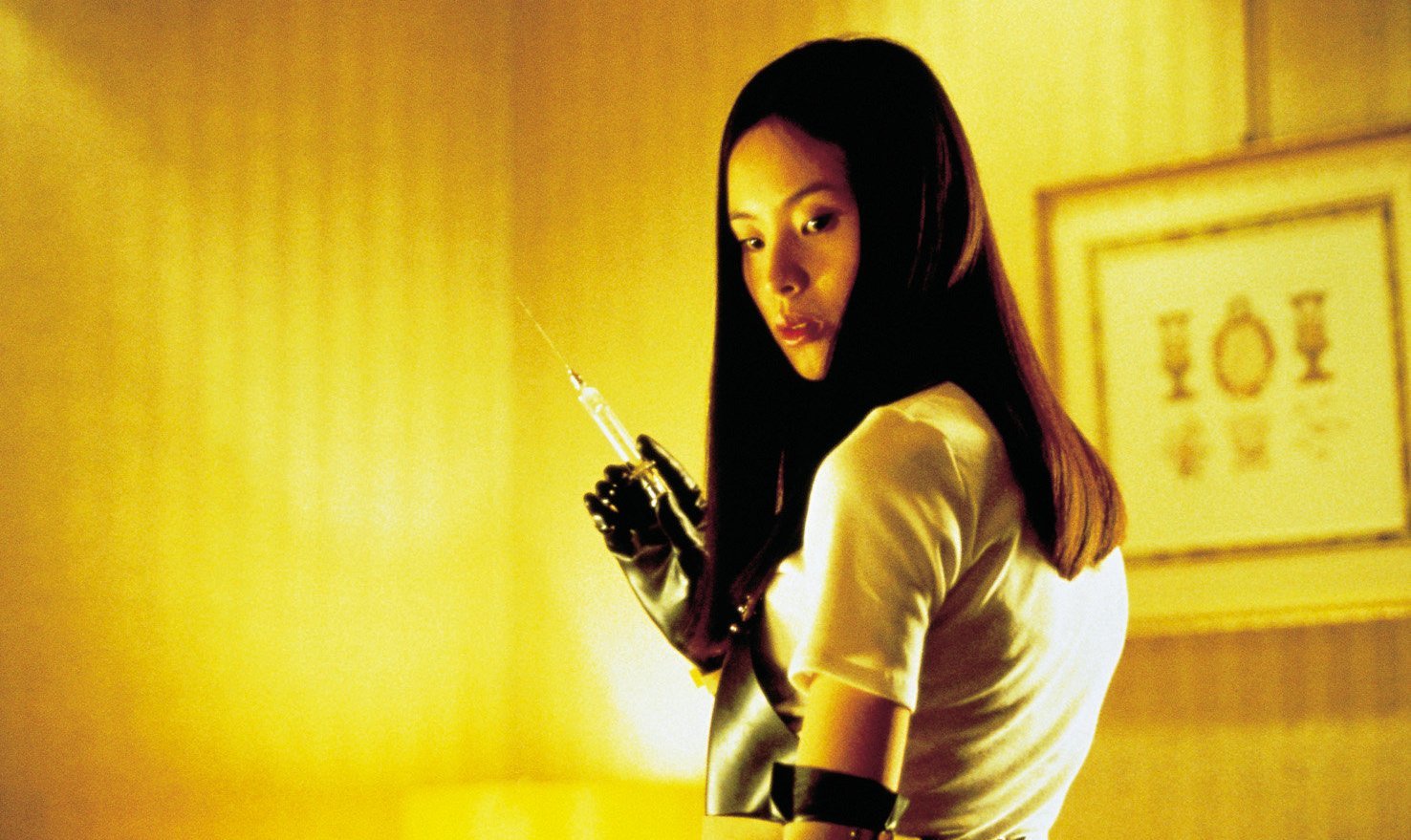5. The Innkeepers (Ti West, 2011)

American filmmaker Ti West seems incredibly undervalued when one looks at the strength of his overall body of work. His most celebrated film – 2009’s House of the Devil – is a retro-horror film shot on 16mm, which really lends the effective chiller an illusion of authenticity.
The film helped West pronounce his love for the genre, as did his send-up of found-footage tropes with 2013’s The Sacrament. The director’s most recent film, In A Valley of Violence, saw him depart from horror filmmaking, and he proved that his talents may extend elsewhere with a nostalgic, brutal and darkly comedic western. However, his fifth film is the choice for this list: 2011’s The Innkeepers, a supernatural slow-burn tale to treasure.
Sara Paxton and Pat Healy play workers of an old hotel which is about to close its doors after over one-hundred years of service. For decades the building has been rumoured as haunted, and the pair decide that it’s the last chance they’ll ever get to find out for themselves. The amateur ghost-hunters begin to experience unexplained events as they conduct a series of experiments, discovering that the hotel’s secret guests feel threatened by their meddling.
West’s film is one of the most satisfying ghost stories of the decade, and it’s success can be accredited to its marvellous pacing. The narrative develops patiently, allowing us to bask in the atmosphere of the film’s eerie location and attach ourselves to the characters; which is made all the more easier courtesy of Healy and Paxton’s warm and humble performances.
The scares are never rushed. Instead, the audience has to approach the danger of the hotel with the same caution that the characters display. At first they are grounded and realistic, as many of us would be – so, when they begin displaying signs of real fear, we really feel there is a lingering presence to be respectful of. It is this feeling which feeds the suspense, and suspense is something West manages to sustain until the very end of the film.
The narrative of The Innkeepers achieves the shape of a timeless ghost story gradually, and while those who are used to more eventful genre fare will probably dismiss it, this modern spin on the traditional haunted-house film will likely satisfy more accommodating audiences.
4. Evolution (Lucile Hadzihalilovic, 2015)

Evolution is a film you’ll ponder long after experiencing it. It was directed by Lucile Hadzihalilovic, the filmmaker behind 2004’s odd fairy-tale, Innocence. She is also the wife of Gaspar Noe, and contributed to the screenplay for his mind-blowing third-feature, Enter the Void. Her 2015 oddity is surreally perplexing, and surprisingly it was based on the director’s experiences as a ten-year-old when she had to go the the hospital to get her appendix removed.
Such spaces can be terrifying and confusing through the eyes of a child, and this is a film that allows us experience this perspective in a way that compels us to discover new surroundings again, drawing attention to how strange procedural things can appear when viewing them for the first time.
Nicolas is a young boy who lives on a remote island with his mother. The village they live in is inhabited only by women and male children. The boys are prey to a medical base which overlooks the ocean; young Nicolas begins to wonder what the reason is behind the treatments and experiments, and what exactly the women do when they gather on the beach under cover of darkness.
It’s an incredible and compelling film, and raises so many questions that it is clever not to answer. Evolution encourages us to place ourselves in the minds of a child again, and when we aren’t given answers we have to use our imaginations to conjure up explanations.
This is what makes it such a great film to discuss, as Hadzihalilovic is able to offer enough creepy and lingering imagery to arouse our attention, but aims for enough ambiguity to allow for interpretation surrounding the world’s potential mythology – it is very clear that the land in which they live does not hide from our own, but exists in a separate universe entirely.
We care about the protagonist, and everything we learn about his environment is introduced to us through his curiosity and bravery. Although, it is perhaps our own extended curiosities which make this such an alluring experience.
What waits across the ocean? This is the overarching question which looms over more plot-specific queries, and thankfully, we are offered a conclusion which stokes the fire enough to create a wonderful and disturbing discussion. It’s an excellent slow-burn with a shuddering atmosphere, of which Hadzihalilovic authoritatively maintains.
3. Kill List (Ben Wheatley, 2011)

Ben Wheatley’s Kill List is his greatest cinematic achievement. His first feature-film – Down Terrace – was released in 2009, and remains criminally underrated today as one of the funniest and sharply observed British gangster films so far this century.
After his here discussed second feature, the director went on to explore the familiar territory of horror and comedy at once with 2012’s Sightseers, then onto a more surreal exercise with A Field in England. Wheatley had certainly found his fans, and his subsequent two features – High Rise and Free Fire respectively – attracted bigger budgets and bigger stars. His career will likely continue to prove more and more successful, but when discussing his work, Kill List remains the most satisfying to watch and discuss.
Neil Maskell and Michael Smiley star as two hitmen who take on a mysterious new assignment. The kill list they are given details three individuals and promises a huge sum of money for completing their work; with family pressures mounting, Jay (Maskell) in particular must take on the job. As they begin working through the list, the nature of their task begins to worry them, up until the horrific motives of their employer reveal themselves in truly disturbing fashion.
The film is at once a terrific British drama, then a thriller, and finally a horror film. The characters are given brilliant depth, and even from the utterly engrossing exposition we are invested in their off-kilter world that initially feels recognisable, only to morph into something nightmarish. It’s a terrific slow-burn; elements of graphic violence and eerie shots which feel to spy on the protagonists hint at the film’s genre potential, of which is expertly fulfilled in a shocking and masterful last act.
There really aren’t many films like Kill List, that is to say that most of the films which attempt to juggle this much in such a short time fail monumentally. The performances are great, the violence actually manages to be shocking, and at the heart of it is a wonderful story which offers the most unique spin on Robin Hardy’s 1973 classic The Wicker Man.
The final shot will have you reeling in disbelief at the sheer bravery Wheatley possesses to approach something so sinister and twisted, and yet something that feels strangely justified upon rewatch – seeds are sewn throughout the gritty narrative of ritualistic intent. This 2011 film may be the best horror film of this decade so far, and it’s power upon rewatch never subsides. A masterpiece, frankly.
2. Diabolique (Henri-Georges Clouzot, 1955)

How amazing it must have been to witness Henri-Georges Clouzot’s Diabolique on initial release in 1955. The director reportedly beat Alfred Hitchcock to the rights of the original novel by mere hours, and it would be easy to see what attracted the master of suspense to the project; the story is one of anxiety and anticipation, a tale of murder, twisted partnership and secrecy – certainly sounds like a Hitchcock film.
As we would expect, the story contains a series of reveals and shocking twists. However, the only problem for new audiences to the film is that it now feels a little predictable, and that isn’t to do a disservice to the film, it’s simply that so many films have flattered and emulated Diabolique by offering their own homage to it, that is, reworking the film’s clever conclusion into their own work.
The wife and mistress of a wretched principal of a boarding school plot to murder him and provide themselves with a flawless alibi. After the plan goes well, the duo dump his body in the school pool to be discovered by the cleaner, in hopes that drowning will be the obvious and immediate cause of death. In an unexpected turn, the body has completely disappeared, and the women become paranoid that the victim of their plan has arose to torment them.
It’s a delightfully entertaining and nerve-shredding film, offering an intriguing tale of guilt and revenge, while simultaneously doubling down as a ghost story – whether this ghost be real, or rather the psychological spectre of their niggling culpability for a serious crime. It is clear to see why many have taken influence from the film, and the reveal aspect has been revised so many times since, which sadly make the film a little too easy to work out for modern audiences.
At the time, it must have been something truly special and groundbreaking; disclaimers are even included in the credits, advising audiences not to spoil the film for others. That’s not to say that the reveal is no longer satisfying, it’s handled brilliantly and is still capable to raise eyebrows. It’s just an example of returning to a classic and – because of our pre-existing knowledge of cinema – we are able to work out it’s narrative course due to the legacy it has achieved.
Diabolique is certainly a classic of both French and horror cinema, and simply must be seen for how effective it is in gradually fuelling tension until the film’s final moments. Imperative viewing, of that there is no doubt.
1. Audition (Takashi Miike, 1999)

Takashi Miike is often associated with explosive cinema, and yet, at the heart of his body of work is 1999’s Audition. Many argue that it’s the cult filmmaker’s greatest achievement, and while it of course comes down to personal opinion, it is difficult to dispute.
The film seems to best showcase Miike’s wide skill-set; he shows restraint, along with consideration for his characters vulnerabilities, and then alternatively he asserts his renowned ability to disturb more effectively than perhaps any other example from his oeuvre .
A widower (Ryo Ishibashi) decides that the time has finally come to meet another woman and allow himself a fresh start. He and his friend organise a fake audition, allowing them to interview a number of actresses and determine which of the women would prove a fitting partner.
During the selection process he finds Asami (Eihi Shiina) – she is shy, quiet, polite – immediately Shigeharu (Ishibashi) is captivated. The two begin dating, and the film plays out like a touching and poignant melodrama about two broken individuals finding love. Then, Miike splices in an unexpectedly unsettling scene, and it becomes clear that the narrative is going to mutate into something entirely different.
Audition is brilliant because it unravels in a way many genre efforts don’t. There are no expository signs that would suggest Miike’s film has anything to do with the horror genre. He encourages us to become invested in his on-screen creations, urging us to invest in Shigeharu’s search for love and show concern for Asami’s mysterious and troubled past.
However, once the filmmaker wishes us to doubt the legitimacy of the blossoming relationship we are witnessing, there is absolutely no turning back; his imagination is herein unstoppable. The imagery on display is shocking and twisted, but thanks to what has preceded it we find ourselves more susceptible to it than we normally would otherwise.
The film worked effectively as an odd romance for its first three acts, and then once it entered surreal territory successfully, it was immediately clear that Miike had delivered something memorable. Of course, this was the case. Audition remains heavily discussed and analysed to this day, a piece of work which progresses slowly towards its iconic climax, and it remains one of the strongest examples of slow-burn horror in cinema history.